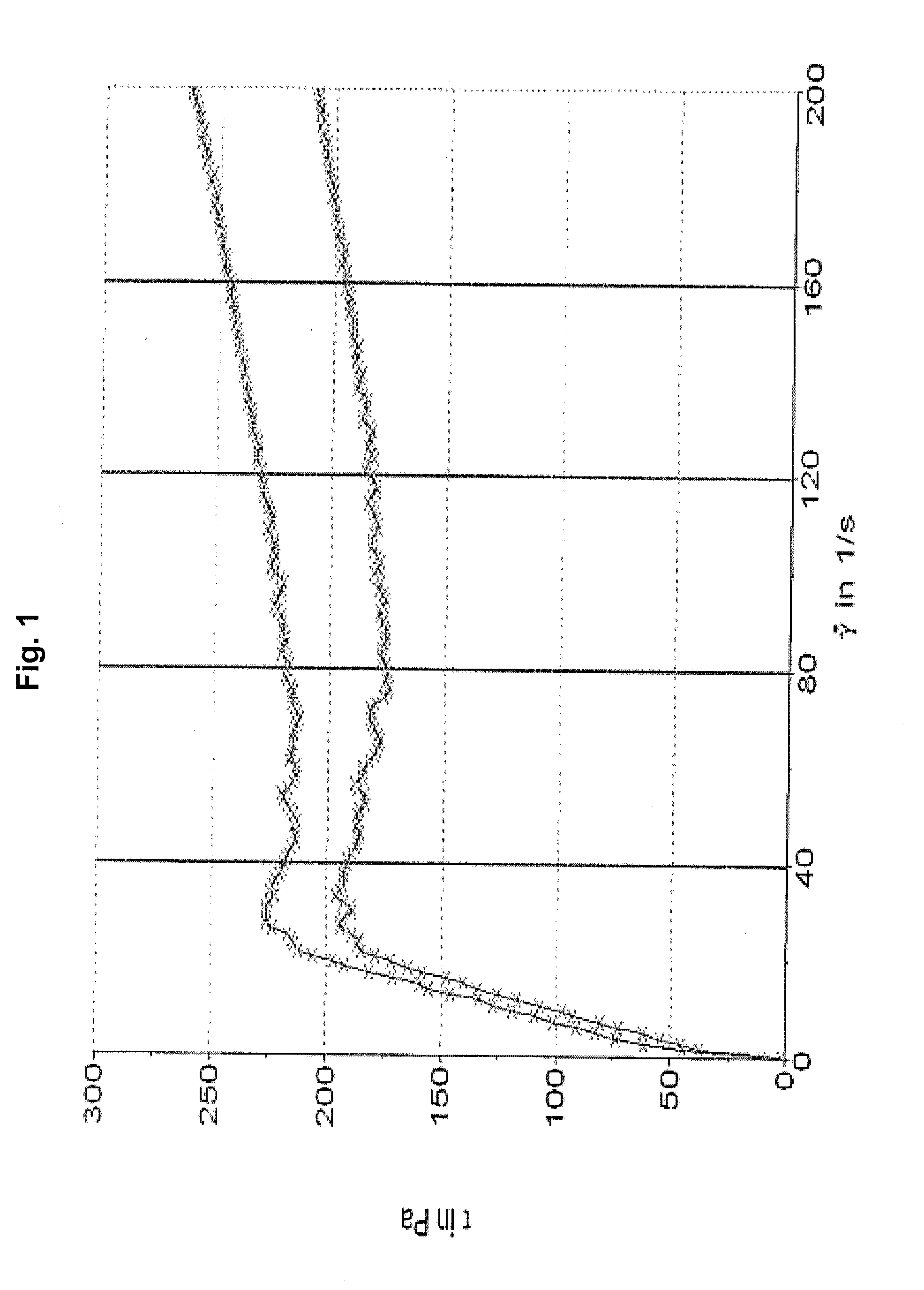Semisolid Aqueous Pharmaceutical Composition Containing Tapentadol
a technology of aqueous pharmaceutical composition and tapentadol, which is applied in the direction of drug compositions, biocide, nervous disorders, etc., can solve the problems of contamination by tapentadol microorganisms, and the solid oral dosage form is not satisfactory
- Summary
- Abstract
- Description
- Claims
- Application Information
AI Technical Summary
Benefits of technology
Problems solved by technology
Method used
Image
Examples
example 1
[0224]Creams were formulated according to the following compositions.
TABLE 1Ingredients [wt.-%]C-1I-1I-2Aqueous PhaseTapentadol HCl0.00.61.25Macrogol-20-glycerol-monostearate (Tagat S2)7.07.07.0Purified water50.049.448.75Lipid phaseGlycerolmonostearate4.04.04.0Cetyl alcohol6.06.06.0Miglyol ® 8127.57.57.5White petroleum jelly25.525.525.5
[0225]In the creams the aqueous phase represented the coherent phase (o / w-type), so that the formulation should be principally sensitive to microbial contamination. The formulations were stored in amber glass container.
[0226]Assuming that tapentadol hydrochloride is only present in the aqueous phase, its concentration therein amounts to 12.0 mg / mL (10.3 mg / mL tapentadol) for the inventive formulation I-1 and 25.0 mg / mL (21.46 mg / mL tapentadol) for the inventive formulation I-2.
[0227]The formulations were spiked with Staphylococcus aureus (Staph. aureus), Pseudomonas aeruginosa (Ps. aerouginosa), Aspergillus niger (Asp. niger) and Candida albicans and ...
example 2
[0230]The viscosity curves of example compositions I-1 and 1-2 according to the invention were determined as follows:
[0231]The experiments were conducted with a Haake RotoVisco RV1 device (sensor C60 / 1° together with thermocontroler DC30, Haake) at 25.0±0.1° C. The material (1.0 mL) was placed between the stator and the rotor and the gap distance of which was adjusted to 0.052 mm. The material was tempered at 25.0° C. before the experiment was started. The viscosity curve was determined with the software RheoWin 3 and the viscosity values (n=4) at different shear stresses (Δ=40 s−1) were taken to characterize the inventive samples. The viscosity curves are depicted in FIG. 1 and the calculated viscosity values are listed in the following table.
TABLE 4viscosityshear stresstshear rate[mPa · s][Pa][s][1 / s]I-1I-2I-1I-2I-1I-240.0004790.65457.8191.59218.26161.80122.3980.0002189.02722.7175.11217.80197.81158.39120.001532.31917.9183.87230.14233.81194.39160.001219.21533.4195.07245.34269.79230...
example 3
Antimicrobial effect of tapentadol at pH 3 and pH 8
[0233]A tapentadol solution with a concentration of 15 mg / mL tapentadol (free base) was prepared. The pH-value was adjusted to the target value of 3 or 8 using citric acid and 1N NaOH solution, respectively. No additional buffer system was added. To ensure the placebo solution shows no antimicrobial effect itself, a placebo solution pH 8 was prepared, with focus on the same pH-value, even though a different amount of 1N NaOH solution was used for pH adjustment.
[0234]The formulations were prepared, filled in glass bottles and sterilized in an autoclave for 30 min at 121° C. and 2 bars. The sterilized glass bottles were spiked with Staphylococcus aureus (Staph. aureus), Pseudomonas aeruginosa (Ps. aerouginosa), Aspergillus niger (Asp. niger) and Candida albicans for the test “Efficacy of antimicrobial preservation” on the basis of Ph. Eur. 6.6 monograph 5.1.3. The Ph. Eur. test acceptance criteria for parenteral preparations are given...
PUM
 Login to View More
Login to View More Abstract
Description
Claims
Application Information
 Login to View More
Login to View More - R&D
- Intellectual Property
- Life Sciences
- Materials
- Tech Scout
- Unparalleled Data Quality
- Higher Quality Content
- 60% Fewer Hallucinations
Browse by: Latest US Patents, China's latest patents, Technical Efficacy Thesaurus, Application Domain, Technology Topic, Popular Technical Reports.
© 2025 PatSnap. All rights reserved.Legal|Privacy policy|Modern Slavery Act Transparency Statement|Sitemap|About US| Contact US: help@patsnap.com

